
In the most recent edition of Australian Archaeology, the journal of the Australian Archaeological Association, there is a paper examining the exchange of stone axes in Victoria and correlating these patterns of exchange with Aboriginal stories in the 19th century. This paper is particularly timely with the passing of legislation in the Victorian Parliament on 21 September 2017, concerning management of the Yarra River. This legislation, the first in Victorian state legislation to include phrases in an indigenous language (Woi-wurrung, the language of the Wurundjeri people – custodians of the Yarra River) recognises the connections between the river and local indigenous people. The Act contains a strategic plan for the river’s management and protection, and provides for a council (the Birrarung – a local indigenous name for the Yarra River – Council), which must include at least 2 traditional owners, to advise and advocate for the river.

The Yarra River runs south-west from the Australian Alps and enters Port Phillip Bay in the city of Melbourne. During the Ice Age, when global sea levels were lower, the river drained directly into Bass Strait (see image to right). Port Phillip bay was flooded by rising sea levels at the end of the Ice Age, reaching its present extent about 8,000 years ago. The bay was briefly drained when the entrance was blocked by a sand bar between 800 and 1,000 CE (about 1,000 years ago). Aboriginal stories recall this well: in 1846, the colonial magistrate, William Hull recorded that local Aboriginal people told him that they:
“recollected when Hobson’s Bay [Port Phillip Bay] was a kangaroo ground; they say, “Plenty catch kangaroo, and plenty catch opossum there;” and [an informant] assured me that the passage up the bay, through which the ships came, is the River Yarra, and that river once went out at the heads, but that the sea broke in, and that Hobson’s Bay, which was once hunting ground, became what it is“
This detailed knowledge of the now submerged area shows the depth of Aboriginal oral traditions, passed down in stories and lore, as part of their ongoing management of the Australian landscape. Many of these stories had intricate myths, which nevertheless included information on how to manage the environment. It appears that the exchange of axes, initially of stone, and later of iron, was part of these stories. The best raw material for making stone axes (and thus the best stone axes) came from the stone quarry at Mount William, near Lancefield about 78 km north of Melbourne. The local Wurundjeri people made very fine greenstone axes, which were traded over huge distances, some as far as 1,000 km, in the period before Europeans arrived in Australia.
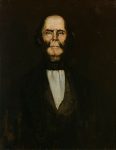
In 1803, the British tried to start a convict settlement on Port Phillip Bay, near modern Sorrento, but within a few months the convicts were moved to Tasmania when a lack of water and conflict with local Aboriginal groups made the settlement unviable. During the upheavals, some convicts escaped, one of whom was William Buckley, who then lived with local Aboriginal people, the Wadawurrung, for the next 32 years. After Melbourne was settled and Buckley had rejoined European society, he worked as a translator for the missionary George Langhorne, who wrote down some of Buckley’s stories. One of these mentioned axes (or “tomahawks”):
“There are… two imaginary Beings whom [the Wadawurrung] treat with a certain degree of respect. One of these is supposed to reside in a certain marsh and to be the author of all the Songs which he makes known to them through his Sons. The other is supposed to have charge of the Pole or Pillar by which the Sky is propped. Just before the Europeans came to Port Phillip this personage was the subject of general conversation it was reported among them that he had sent a message to the Tribes to send a certain number of Tomahawks to enable him to prepare a new prop for the Sky as the other had become rotten and their destruction was inevitable should the sky fall on them to prevent this and to supply as great a number of iron Tomahawks as possible ”
Very similar stories are repeated in a range of sources, including the records of A.W. Howitt, a 19th century anthropologist, who interviewed William Barak, a senior clan head of the Woiwurrung, who had been about 11 years old (and a witness to events) when John Batman signed his treaty with clan leaders. Barak’s uncle was custodian of the Mount William stone axe quarry, a title which Barak later inherited. Howitt recorded:
“They believed too that the sky was propped up by poles where it rested on the mountains in the north-east. Before the “white men came to Melbourne” a message was passed from tribe to tribe, until it reached the Wurunjerri, that the props were becoming rotten, and that unless tomahawks were at once sent up to cut new ones, the sky would fall and burst, and all the people would be drowned“

A similar story was recorded by Ethel Shaw, the daughter of the station manager at Yelta Station (also a mission) on the Murray River, about 500km north-west of Melbourne, home of the Marawara people, as having been told to her father in the late 19th century. These stories were linked to the flood stories, which are very common in Aboriginal traditions, and relate in great detail which areas were flooded. Various mythological reasons are given for these inundations, including that the sky fell, causing the clouds to burst open when they hit the ground and release all the rainwater in huge floods.
Stories also record the efforts of ancestors to manage the water flow down from the mountains, by cutting channels for water to flow – an activity which is described as “using up too many stone axes”. As custodians of the land, each Aboriginal group had responsibilities related to managing the environment and trying to ensure that it remained healthy and stable. It appears that the need for stone axes in the mountains, some distance from the Mount William quarry, was articulated in stories, which ensured that stone axes were supplied to the mountains, thus helping maintain exchange networks over long distances and ensuring equitable access to resources.
We now know that ground stone axes date back 65,000 years to the earliest evidence of Aboriginal settlement in Australia. Over the millennia, especially following the huge climate changes at the end of the Ice Age, Aboriginal people developed ways of managing the environment and exchanging resources. The framework for these activities was a rich tradition of stories and mythology, which helped people to relate to their world and their role within it. We are still learning to interpret all the information within these stories.

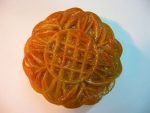 The second half of the year can be tough for younger students – they are often starting to get tired and attention may be flagging at this stage. In order to liven things up, the units for Foundation/Prep/Kindy (
The second half of the year can be tough for younger students – they are often starting to get tired and attention may be flagging at this stage. In order to liven things up, the units for Foundation/Prep/Kindy (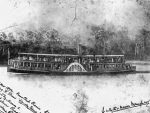 The older students have finished or are finishing off their
The older students have finished or are finishing off their  Students in Foundation/Prep/Kindy (
Students in Foundation/Prep/Kindy ( Older students are completing their main term research projects by finishing their
Older students are completing their main term research projects by finishing their  Our youngest students (
Our youngest students ( Students in integrated Year 3/4 classes (
Students in integrated Year 3/4 classes ( Each year level focuses on a different aspect of Australian history and enough topics are supplied to ensure that each student is working on new information, even in multi-age classes. Instead of finding a continual stream of new, novel HASS units, or repeating material some students have covered before, OpenSTEM’s
Each year level focuses on a different aspect of Australian history and enough topics are supplied to ensure that each student is working on new information, even in multi-age classes. Instead of finding a continual stream of new, novel HASS units, or repeating material some students have covered before, OpenSTEM’s 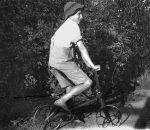 Students in Foundation/Prep/Kindy (
Students in Foundation/Prep/Kindy (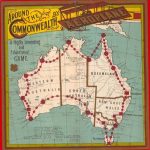 Older students are expected to analyse their Data in increasing detail relevant to their year-level, as well as listing sources in the Method section of their
Older students are expected to analyse their Data in increasing detail relevant to their year-level, as well as listing sources in the Method section of their 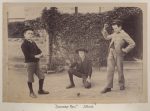 The focus of this term is an investigation into the past and how we can find out about past events. For students in Foundation/Prep/Kindy (Units
The focus of this term is an investigation into the past and how we can find out about past events. For students in Foundation/Prep/Kindy (Units 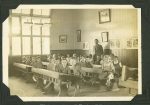 As students in Years 3 (Unit 3.7), 4 (Unit 4.3), 5 (Unit 5.3) and 6 (Unit 6.3) move into the period of gathering information from sources to address their research question, teachers should guide them to consider the nature of each source and how to record it. Resources such as
As students in Years 3 (Unit 3.7), 4 (Unit 4.3), 5 (Unit 5.3) and 6 (Unit 6.3) move into the period of gathering information from sources to address their research question, teachers should guide them to consider the nature of each source and how to record it. Resources such as
My grade 4 son played this with me a few times, his feedback was it was too easy but fun,…
Brad